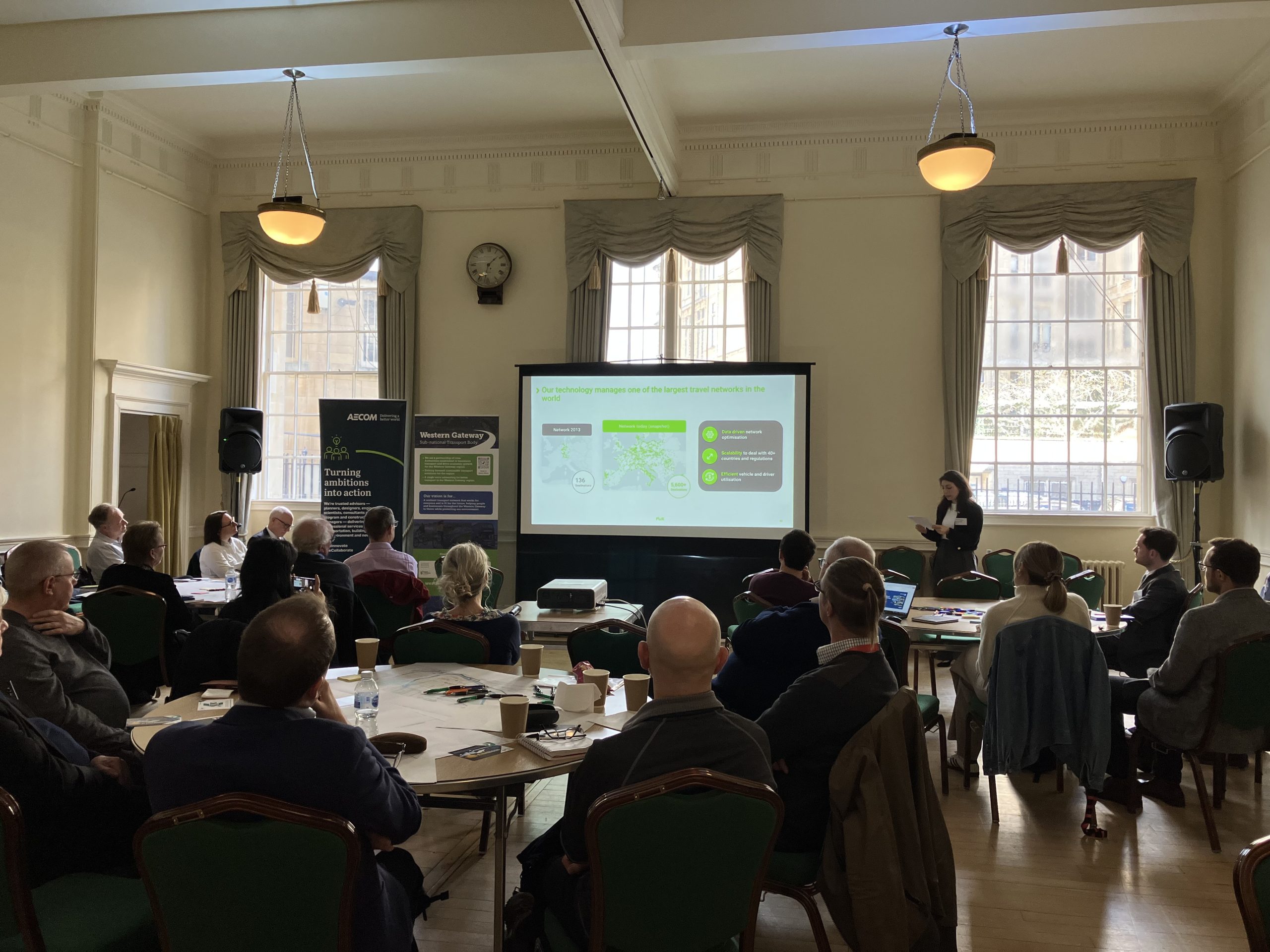We held our fourth regional coach forum on the Tuesday 11 March in person at the Guildhall in Bath. The forum was attended by 27 stakeholders and was a chance for collaboration between the public and private sectors to promote the coach sector – which is an often misunderstood but very environmentally friendly form of transport.

The workshop began with AECOM giving a brief run through of the work completed to date. This included the process for developing of the coach strategy, which has 32 recommended interventions as well as six challenges faced by the sector. Under the connectivity theme, three potential new service routes are being investigated within the scope of work.
CPT presented on the importance of coaches nationally and to the West of England. Their presentation included industry facts about the economic impact of coaches nationally and regionally, including both primary and secondary benefits. There was also information on Women in Bus and Coach, which is a national network to encourage, represent, support and retain women in the bus, coach and community transport profession.
Bristol Airport presented on the latest developments regarding coaches at Bristol Airport. They spoke about plans to increase passenger numbers from 10 million in 2025 to 12 million and more in the years to come. As part of their planning commitments, Bristol Airport must increase the mode share of public transport from 15% to 17.5% – this is an increase of over 300,000 passengers per year traveling by public transport, in addition to staff.
Bath Bus Company gave a business overview of its local company, which is a subsidiary of the wider French owned RATP company and current activities. These include the ‘Tootbus’ sightseeing service as well as the A4 ‘Air Decker’ airport shuttle service between Bath and Bristol Airport.
FlixBus gave a presentation on the recent expansion of FlixBus, noting how it is a global-travel-tech company managing one of the world’s largest travel networks, currently serving over 5,600 destinations across 45 countries. In the UK they currently have 200 vehicles running on contract to them serving 80 destinations. FlixBus have significantly grown their network in the South west, including expanding their services this summer with new destinations such as Bath, Chippenham and Swindon coming on stream.
AECOM then presented on the findings of the Strategic Gap 2 Corridor Assessment, which was one of the key gaps from the original Western Gateway STB Coach Strategy and had a core route from Cheltenham to Bristol Airport. The key conclusion was that there would be sufficient demand for a low frequency service, up to 1 service an hour during weekday peak periods, linking Cheltenham, Stroud, North Bristol (including UWE campus), Bristol City Centre and Bristol Airport.
AECOM them shared the indicative findings of the Strategic Gaps 1 and 3 Corridor Assessment. These broadly link Gloucestershire and the Dorset Coast along three north to south corridors plus a route from Bristol to Bournemouth. Results suggest that across the course of a day a maximum of 1-2 coach services a day would be sufficient to carry demand along the Eastern Corridor between Cheltenham and Bournemouth/Poole. But there doesn’t appear to be much latent long-distance demand on the other corridors. So, assuming there isn’t sufficient demand to justify new coach services on those corridors, other options may include enhancing existing inter-urban bus services and increasing service frequencies potentially by introducing limited stop express services at certain times of the day and plugging holes where there is little or no public transport.
Both feasibility reports will be shared in Spring 2025.
STB officers confirmed the planned site visits that would be taking place during April 2025, including audits of coach parking locations and potentially linking up with coach drivers and tours taking place. The findings gathered will be shared at a future forum and shared on our website in Summer 2025.
Following the forum, participants went on a walking tour of Bath to view coach parking and drop-off locations within the town centre.

